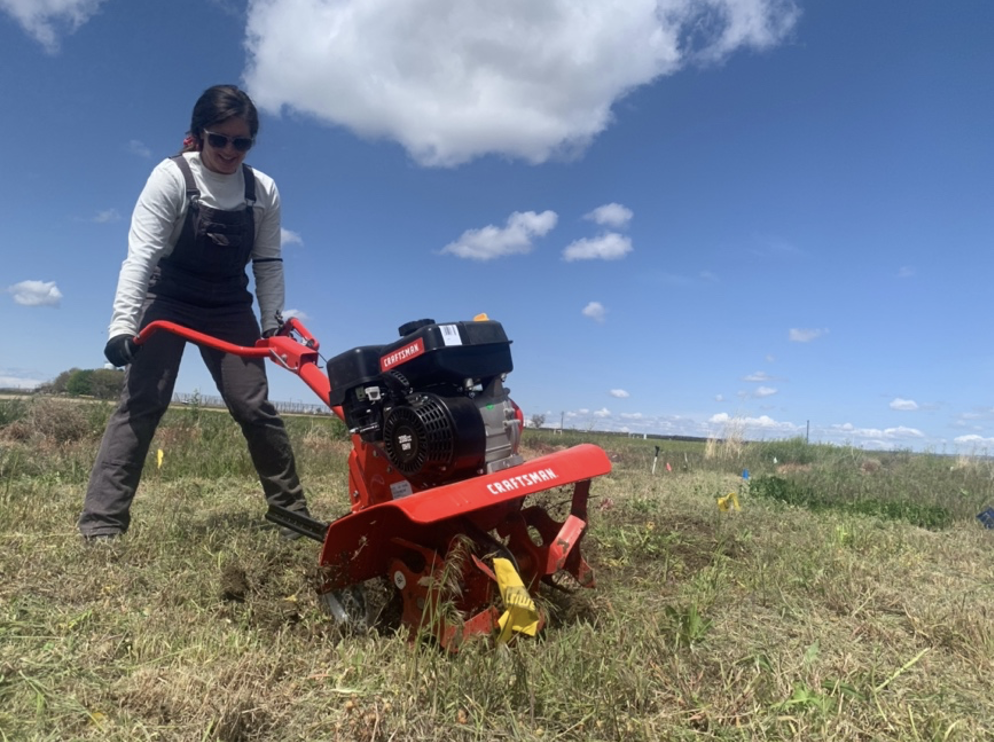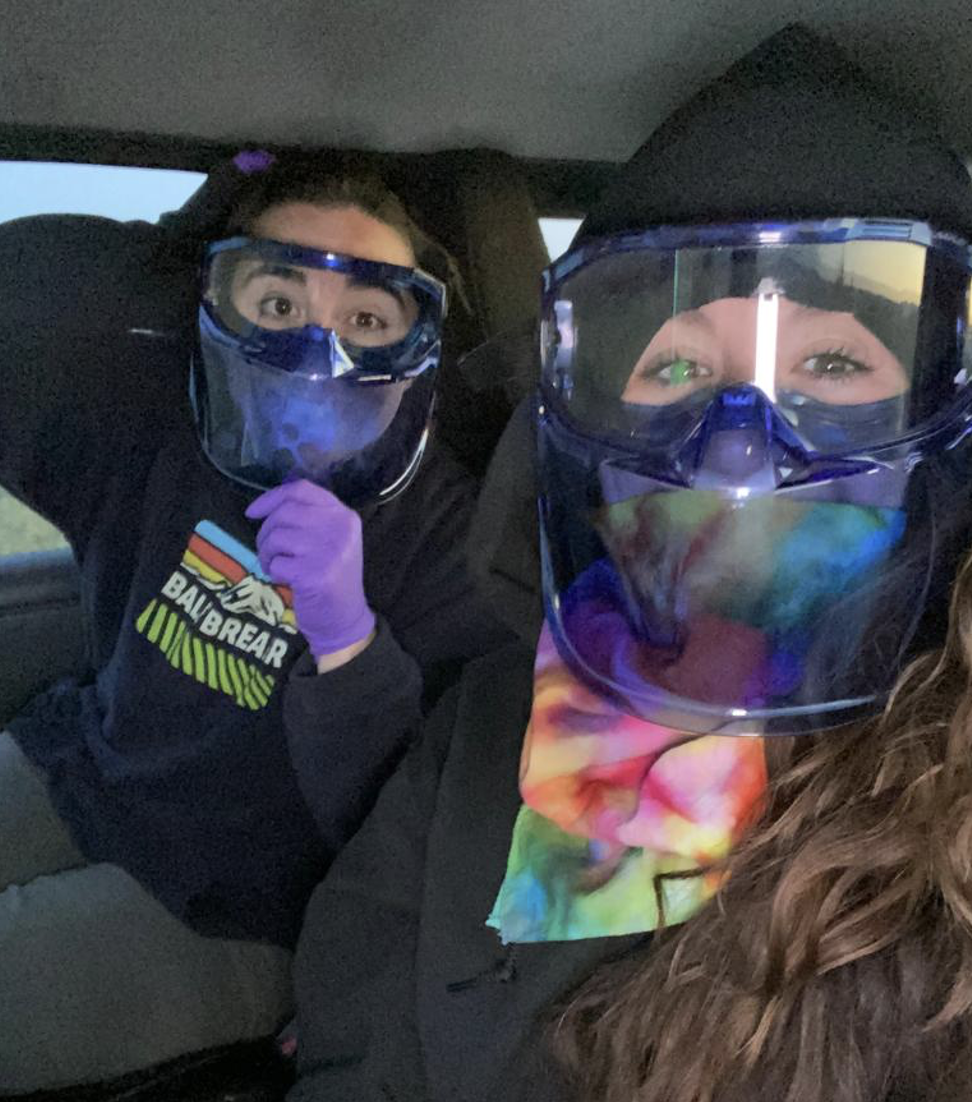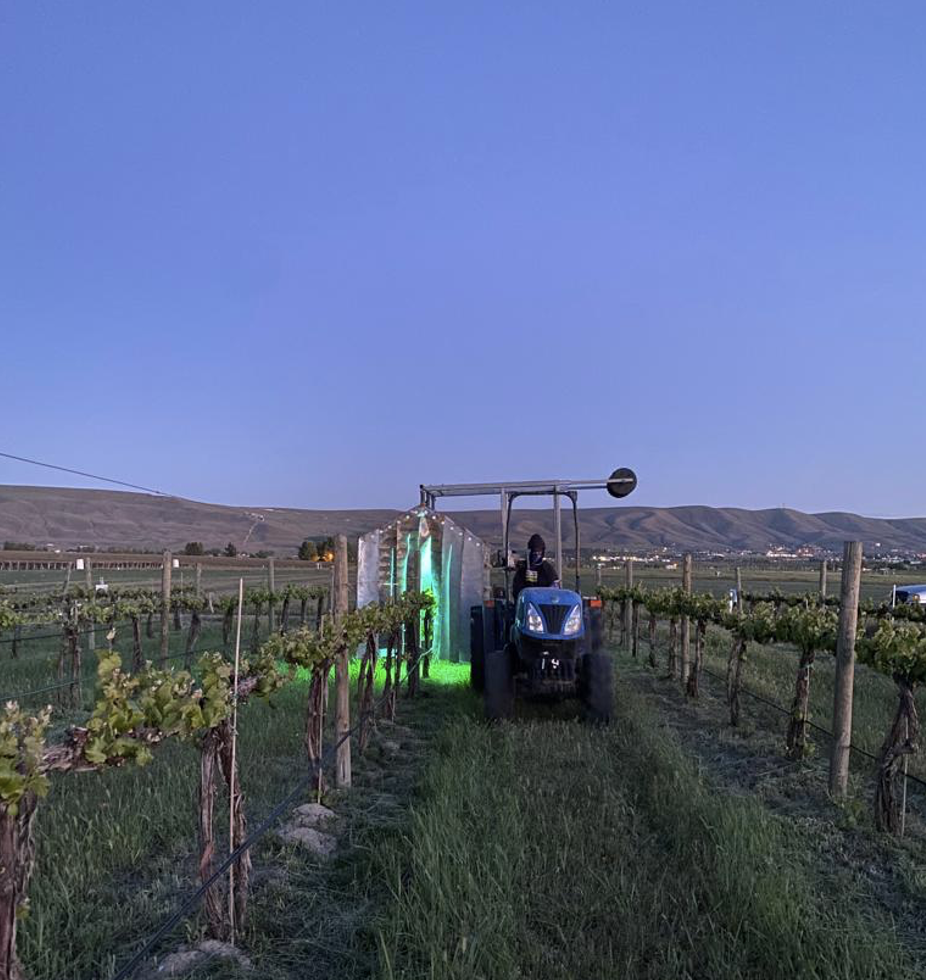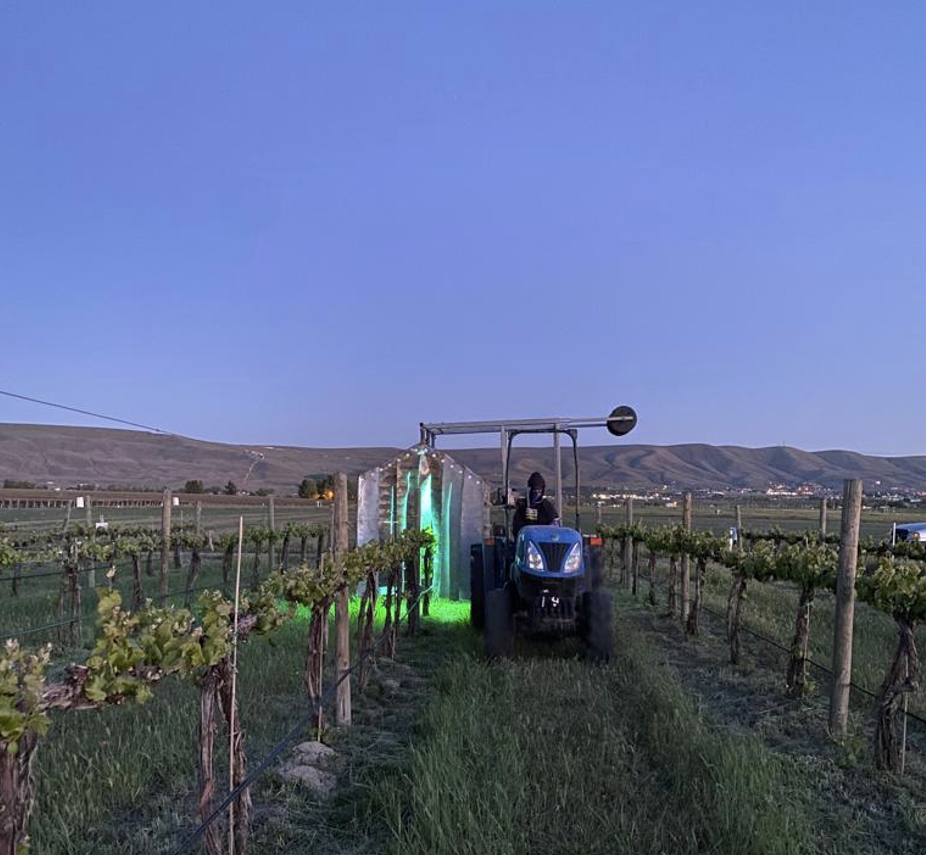Enjoy the second story from Bernadette Gagnier, WSU V&E PhD Research Student.
May is when we tend to get really busy in vineyard research. This is usually when temperatures increase, and the growing season is fully underway. While harvest is the busiest time for the wine industry overall, in research, summer, what we call “field season” is our busiest time of year. But it’s also exciting and it goes by quick. When your days are filled, they tend to fly by.

This year we got a slow start as it is a cooler and wetter vintage. This gave us a little bit more time to just breathe and not feel the pressure of the season. When I say we, I am usually talking about my fellow grad student Lexie. We are the only two grad students in our lab and we rely on each other to help one another and assist with almost all of our projects and experiments. We also have a tech, Maria, she is amazing. We would not have gotten this far in grad school without her, and she helps us out in more ways than I can say.

This is both mine and Lexie’s third season collecting data and working on our projects. Being our third year means we are starting to wrap up trials and for the most part no new experiments are introduced. It also means we are TIRED! We have a lot of fun together, but we are both feeling the stress of field season. I help Lexie with a really cool project she is working on. This project usually starts the first week of May, but this year we got a few extra weeks of “down time” before starting mid-May. She is exploring UVC light as a method to kill powdery mildew in grapevines. It uses an apparatus that is pulled behind a tractor, similar to traditional sprayers, that is filled with UVC light bulbs. She uses this “sprayer” at night as it disrupts the DNA of powdery mildew, and it cannot repair itself without UVA/UVB. It’s such a cool thing to be part of, but it leads to some long days and nights, as we cannot start her applications until after sunset and final light has dissipated. Having a friend in grad school makes the long hours so much more tolerable, and even when we are out there past midnight, we always have fun.

I am exploring some cover crops that can reduce plant parasitic nematode pressure in vineyards. These could be useful tools for vineyards focused on sustainability or farm organically as they are not dependent on synthetic chemicals. This work starts for me in May, and this year the temperatures have made it much more enjoyable. I take soil samples in the different cover crops I am researching each spring, and then evaluate them for the presence and densities of plant parasitic nematodes. I also get ready to re-seed the annual cover crops and am constantly fixing and fighting my irrigation.
This year, I was asked to come speak to a class at Sunnyside high school. This is something I wasn’t expecting to enjoy so much. I am friends with the horticulture instructor at Sunnyside High school and spoke to the students in one of his senior classes. When I was in high school, I had no idea farming in wine grapes existed, let alone the amount of research that goes on behind the scenes. I also have a non-traditional path into agriculture and education, it was nice to get to share this with future generations and students who have an interest in agriculture and it was fun to tell them about some of the things I’ve experienced and learned along the way. It was the least formal of the presentations I have given but one that carries some of the most importance to me.
Traducido por David Rodriguez.
“En investigación, el verano es lo que llamamos ´temporada de campo´, la temporada de más intensidad del año.”
Mayo es cuando estamos más ocupados en la investigación del viñedo. Es usualmente cuándo las temperaturas incrementan, y la temporada está en su máximo esplendor. Mientras la cosecha es el momento más intenso logísticamente en la industria, en la investigación, el verano, lo que llamamos “temporada de campo” es nuestro momento más atareado del año. Pero también es emocionante y se pasa rápido. Cuando tus días están llenos, tienden a pasar rápido.

Este año comenzó lento ya que es una temporada más fría y húmeda de lo normal. Esto nos dio más tiempo para respirar y no sentir la presión de la temporada. Cuando digo nos, estoy usualmente hablando de mi compañera investigadora Lexie. Somos las únicas estudiantes de grado investigativo en nuestro laboratorio y recaemos mucho la una en la otra asistiéndonos en casi todos nuestros proyectos y experimentos. También tenemos a una ayudante, María, ella es increíble. No estaríamos en dónde estamos si no fuera por ella, y nos ayuda en más cosas de las que puedo contar.

Esta es la tercera temporada mía y de Lexie adquiriendo data y trabajando en nuestros proyectos. Siendo nuestro tercer año significa que estamos a punto de terminar las pruebas y en gran parte no hay experimentos nuevos que agregar. ¡También significa que estamos CANSADAS! Nos la pasamos muy bien juntas, pero ya estamos resintiendo el estrés de la temporada. Yo le ayudo a Lexie con un proyecto buenísimo. Este proyecto usualmente empieza la primera semana de mayo pero este año tenemos unas semanas extra de tiempo libre antes de empezar a mediados de mayo. Ella está explorando la luz UVC como un método para mata el oídio en las viñas. Utiliza un aparato que se monta a un tractor, similar a las aplicadoras tradicionales, que está repleto de bombillas de luz UVC. Ella usa esta aplicadora en las noches ya que disrumpe el ADN del oídio, y no se puede reparar sin luz UVA/UVB. Es increíble poder ser parte de esto, pero son días y noches extremadamente largos ya que no podemos empezar las aplicaciones hasta que no haya luz solar. Tener a una amiga en el doctorado hace que las horas sean más tolerables. A su vez, cuando estamos afuera pasada la medianoche, nos la pasamos increíble.

Yo estoy explorando algunos cultivos de cobertura para la reducción de la presión del nemátodo parasítico en viñedos. Estas pueden ser herramientas para los viñedos enfocados en prácticas sustentables u orgánicas ya que no dependen de químicos sintéticos. Este trabajo comienza en mayo, y este año las temperaturas han sido mucho más agradables. Tomo muestras de suelo en distintos cultivos de cobertura de los cuales estoy investigando, cada primavera. Y después los evalúo para ver la presencia y las densidades del nemátodo parasítico. También me preparo para sembrar de nuevo los cultivos de cobertura anuales y estoy constantemente reparando y peleándome con mi irrigación.
En este año, me pidieron venir a hablar a una clase en la preparatoria de Sunnyside. Esto es algo que no esperaba disfrutar mucho. Soy amiga del instructor de horticultura de la preparatoria y hablé con los estudiantes en una de sus clases avanzadas. Cuando yo estaba en la preparatoria, no tenía idea de que la viticultura existía, mucho menos de la investigación que pasa detrás de bambalinas. A su vez, mi camino hacia la agricultura y la educación no ha sido, para nada, tradicional. Fue muy lindo poder exponer esto con las futuras generaciones y estudiantes que tienen un interés en la agricultura y fue muy divertido hablarles sobre algunas de las cosas que he experimentado y aprendido a lo largo de todo este tiempo. Fue la más informal de las presentaciones que he dado pero una que tiene una carga de importancia muy grande para mí.


Join the Conversation